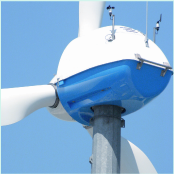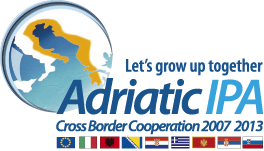News
- Call for tender to supply and to install anemometer towers is expired
March the 22nd the call for tender to supply and to install anemometer towers is expired. Now the Marche Polytechnic University will proceed with the opening of tenders. The bailment agreements for the anemometric towers, modified according to your needs, must be urgently sent to Marche Polytechnic University.
- Alma mater studiorum – Università di Bologna, Dipartimento di Ingegneria Energetica, Nucleare e del Controllo Ambientale (DIENCA)
Viale Risorgimento 2
40136 Bologna – I
http://www.ingegneriaindustriale.unibo.it/it/dipartimento/presentazione-del-dipartimento
As a sponsor of Project Powered provides calculation for offshore wind turbine foundations
- Wpd Italia Offshore srl
Viale Aventino, 102
00153 Roma – I
Tel. +39 06 960 353-00
As a sponsor of Project Powered provides wind data by onshore wind masts
- SIMAM spa Servizi industriali manageriali ambientali
Via Cimabue, 11/2
60019 Senigallia AN
ITALYTel. +39 071 6610040 – 6610063
Fax +39 071 6610165
info@simam-spa.itAs a sponsor of Project Powered provides services
- Api Nova Energia
Via Salaria n. 1322
00138 Roma RM– I
Tel. +39 06 84931
As a sponsor of Project Powered provides wind data by onshore wind masts
- In 2012, wind power grew by 20 per cent
2012 was a very important year for wind power: the Ansa press agency reported that its use has increased by 20 percent, reaching 282.5 GW. The statistics of the Global Wind Energy Council confirm that globally there are more than 45 GW compared to 2011. Regarding Europe, it should be reported a growth in Sweden, Romania, Poland and Italy, which has installed 1.3 GW in 2012, reaching 8.1 GW. In this way Italy is ranked sixth in the world with 2.9% of global production.
- The Eastern Europe chooses the wind power
An Ewea study explains how the nations of Eastern Europe are focusing on wind energy: they will be the subjects that will boost the sector. The news is reported by the ANSA agency: the goal of these countries is to reach the power of 16 GW in 2020 compared to the current 6.4 GW. In this way the wind power will provide electricity to 9 million households.
The challenge regards the legislation, especially in the Czech Republic, Hungary and Bulgaria, while Poland and Romania have doubled in a year the wind energy potential.
- Project Powered at the Wind energy Asia 2013
The Project Powered will be illustrated at the ‘Wind Energy Asia 2013’, which is hosted from February 24th to 26th at the International Convention Center Jeju Jeju in South Korea.
The project is one of topics that Roberto Longo, of the Rina group of Genoa, will introduce at the meeting ‘The Status of Offshore Wind Energy – Floating Type’, Monday, February 25 (2 pm). Specifically, the topic of which Longo will speak is ‘Overview of Offshore Wind Turbine Applications in the Mediterranean Area’.
- The call for tender to build nine anemometer towers along the Adriatic coast
Thanks to Project Powered, there’s a big chance to take an important step forward to study the potential of offshore wind energy in the Adriatic sea: the call for tender for purchasing and installing nine towers for anemometric measures, to be placed along the Adriatic coast as predicted by Project Powered, has been sent to the Official Journal of the European Union on February 5th 2013 and has been published by the Gazzetta ufficiale of the Italian Republic on February 8th 2013.
In this way, another of the project aims has been reached, after the one consisting in the detailed mapping of wind resources of the Adriatic Sea, which was completed in August last year. By installing this network of terrestrial anemometers, and the subsequent call for tender to install an offshore anemometer, the Project has developed a monitoring system of high quality, based on 8 towers of 45 meters and one of 100 meters in height, equipped with anemometers at different levels.
The system gives the chance to improve and qualify to the highest degree the map of the Adriatic sea winds, which has been developed numerically in the first stage of the project, and to implement a system of weather forecasting short-term (24-48 hours), adapted to estimate the production of electricity from offshore wind farms. This has been possible thanks to the economic resources made available for the project, that is the most important funded by the IPA Adriatic Cross-Border Programme, with European funding of approximately 4 million and 400 thousand euro. The analysis of the collected data – the data will be published on the project website, http://www.powered-ipa.it – gives the chance to check carefully if there are favourable climatic conditions in specific areas of the Adriatic Euroregion to develop the wind power technology for the production of electricity.
It’s important to underline that Project Powered uses its studies as a starting point to draw real GUIDELINES: a set of best practices to be used in the design of offshore wind power, but also to identify FORBIDDEN AREAS for the installation and the necessary authorization procedures to present an offshore wind project. All this, keeping togheter environmental sensitivity and regard for the laws of the member participating in the project (Albania, Croatia, Italy and Montenegro).




 English
English Italiano
Italiano